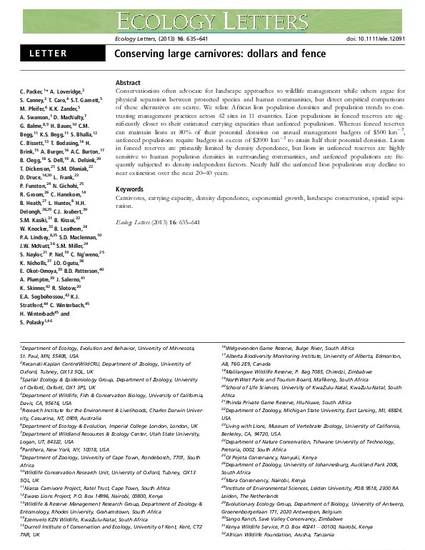
Article
Conserving large carnivores: dollars and fence
Ecology Letters
(2013)
Abstract
Conservationists often advocate for landscape approaches to wildlife management while others argue for physical separation between protected species and human communities, but direct empirical comparisons of these alternatives are scarce. We relate African lion population densities and population trends to con- trasting management practices across 42 sites in 11 countries. Lion populations in fenced reserves are sig- nificantly closer to their estimated carrying capacities than unfenced populations. Whereas fenced reserves can maintain lions at 80% of their potential densities on annual management budgets of $500 km2, unfenced populations require budgets in excess of $2000 km2 to attain half their potential densities. Lions in fenced reserves are primarily limited by density dependence, but lions in unfenced reserves are highly sensitive to human population densities in surrounding communities, and unfenced populations are fre- quently subjected to density-independent factors. Nearly half the unfenced lion populations may decline to near extinction over the next 20–40 years.
Disciplines
Publication Date
2013
DOI
https://doi.org/10.1111/ele.12091
Citation Information
Dan R. MacNulty. "Conserving large carnivores: dollars and fence" Ecology Letters Vol. 16 (2013) p. 635 - 641 Available at: http://works.bepress.com/dan_macnulty/56/
